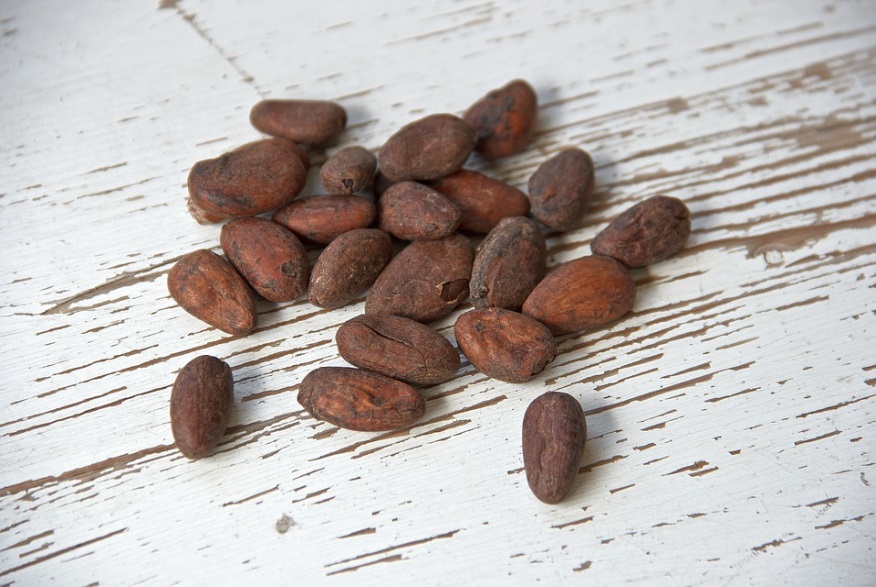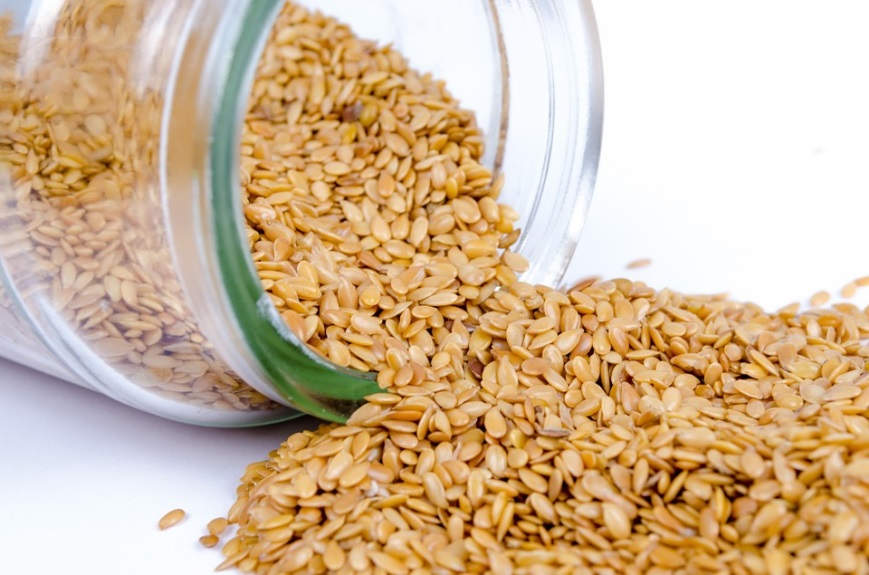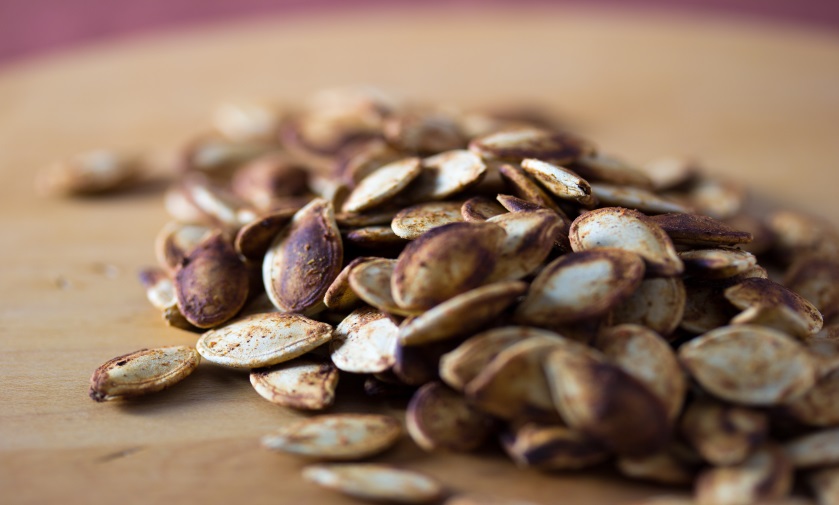This article was originally published on Whole Health’s website.

Men’s health can mean a lot of things but this discussion will primarily center around 5 key nutrients that support cardiovascular health, sexual health, and muscle mass– topics we find are important to many of our male patients.
When we talk about men’s health, it’s worth mentioning vascular health for a few reasons. One reason is to support cardiovascular function for a healthy heart, but also to address and prevent erectile dysfunction which can be caused by sub-optimal health of blood vessels. The cells lining blood vessels are called endothelial cells. Endothelial cell dysfunction is a primary contributor to atherosclerosis (plaque forming in blood vessels). Endothelial dysfunction increases with age but can be exacerbated by high blood sugar, inflammation, and oxidative stress.
Effects from nitric oxide will come into play below so here’s a little background. Nitric oxide is released from the endothelial cells lining your blood vessels and results in vasodilation. In men who have erectile dysfunction associated with arterial origins, increasing nitric oxide and therefore dilating blood vessels can result in improved erectile function. These effects on blood vessels can result in other cardiovascular benefits and potentially play a role in exercise performance.
Now let’s get on with it!
1 – Cocoa polyphenols
That’s right, chocolate. Some of the evidence-backed benefits of cocoa polyphenols are due to its cardioprotective effects including improved endothelial function and blood flow in people with cardiovascular disease as well as in healthy individuals. [1] Proposed mechanisms include reducing LDL cholesterol oxidation (bad cholesterol), decreasing platelet adhesion (reduced risk of blood clots), increasing nitric oxide (that vasodilation we talked about), modulating inflammation, and more. [2] [3]
Cocoa polyphenols also have antioxidant activity, reducing levels of oxidative stress that contributes to cardiovascular disease. There appears to be an effect on blood pressure, due not only to the increase in nitric oxide production but a possible action on angiotensin-converting enzyme (a target of ACE-inhibitor blood pressure medications). [4] [5] [6]
This doesn’t mean you get a free pass on chocolate bars! For the occasional treat, a square of dark chocolate (70% or higher) is appropriate for most people.
2 – L-Arginine (& Citrulline)
Arginine and citrulline are both amino acids that promote or act as a substrate for producing nitric oxide. High levels of arginine are found in sesame seeds, sunflower seeds, spinach, turkey, crustaceans, and mollusks. Arginine was shown to both improve sperm quality and help men with mild erectile dysfunction achieve erections when combined with a derivative of pine bark [7] [8] [9] or with l-carnitine and niacin. [10] Arginine may improve exercise performance, [11] though results have been mixed.
Citrulline has also been shown to improve erectile function by increasing nitric oxide [12] and can also have other cardiovascular benefits like lowering blood pressure, as well as improving oxygen uptake in high-intensity exercise. [13]
3 – Zinc
Zinc is involved in the production of over 300 enzymes, is needed for DNA repair, influences testosterone synthesis and is essential for sperm production and motility so it’s easy to see why zinc was a must in this list.
To really paint the picture for why zinc is important for sperm health and fertility, Sara Brewer, MD, author of Better Sex explains that “each ejaculation can expend up to 5 mg of zinc, or one-third of your daily allowance.” [14] Studies have indicated that low serum zinc may be associated with sexual dysfunction [15] [16] and hypogonadism, [17] which understandably may be related to testosterone levels. Studies have indeed shown an inverse correlation with levels of testosterone and zinc, [18] [19] and an increase in sex hormone levels with zinc supplementation. [20] Zinc is likely more effective at influencing testosterone levels or sexual dysfunction in people with low zinc levels.
Other benefits of zinc include inflammation reduction by decreasing the generation of inflammatory cytokines (signaling proteins), [17] preventing the decrease of thyroid hormones and testosterone after exercise, [21] and antioxidant properties that help combat damage caused by reactive oxygen species. [22] Some foods high in zinc include oysters, beef, pumpkin seeds, sesame seeds, lentils, and garbanzo beans.
4 – Lycopene
Lycopene, often associated with tomatoes, is a carotenoid pigment also found in other red fruits and vegetables. Lycopene is on the list because evidence points toward benefits for prostate health. Systematic reviews and meta-analyses have shown lycopene to be beneficial for reducing risk of prostate cancer [23] [24] [25] and was associated with less aggressive disease in prostate cancer. [26] This protection for prostate cancer is thought to occur due to modifications in expression of a collection of testosterone-regulated genes, altering NF-ĸB and microRNA expression. [27] [28]
Lycopene may also be an effective addition to treatment of BPH (benign prostatic hyperplasia). It was shown in a double-blinded randomized study to be more effective in combination with Serenoa repens, selenium, and tamsulosin, than any of the therapies alone. [29] The Serenoa repens, selenium, and lycopene combination has been shown to have anti-inflammatory activity, [30] reduce prostate weight, and reduce hyperplasia, augmenting the evidence in support of lycopene consumption in BPH. [31]
5 – Branched-Chain Amino Acids 
Let’s talk about muscle. Even if you aren’t a bodybuilder, maintaining quality muscle is good for your health, and who doesn’t want to be the senior known for the great biceps?
Amino acids are the building blocks of proteins and the branched-chain version are simply those that have a branch in their structure, including leucine, isoleucine, and valine. These are particularly important for building muscle and also happen to be considered “essential,”meaning you can’t produce it in your body from scratch and therefore must get it from food.
For any exercise program, but particularly weight-lifting, getting adequate protein is essential for rebuilding muscles by repairing tiny tears that occur during the workout. Supplementing with BCAAs can aid in muscle building and increase the sensitivity of the muscle to amino acids, further promoting muscle growth. BCAAs can also help reduce muscle wasting that occurs during recovery from muscle injury where nutritional needs can be similar to those of athletes [32] as well as age-related muscle wasting called sarcopenia. [33] BCAAs may also be a key player in achieving the challenging but possible feat of weight loss while maintaining or building muscle mass. [34] This isn’t just for men of course– BCAAs have been shown to have many of these benefits in both men and women, including improved exercise performance,[11] and benefits go beyond muscles to metabolic health with higher BCAA intake potentially reducing the risk of diabetes. [35]
FDA Disclaimer: These statements have not been evaluated by the Food and Drug Administration. This information is for educational purposes only and are not intended to diagnose, treat, cure or prevent any disease.
Please consult your healthcare provider before making any healthcare decisions or for guidance about a specific medical condition.
Works Cited
[1] S. Baba, M. Natsume and A. N. Y. Yasuda, “Plasma LDL and HDL cholesterol and oxidized LDL concentrations are altered in normo- and hypercholesterolemic humans after intake of different levels of cocoa powder,” J Nutr, vol. 137, pp. 1436-1441, 2007.
[2] J. Mursu, S. Voutilainen and T. Nurmi, “Dark chocolate consumption increases HDL cholesterol concentration and chocolate fatty acids may inhibit lipid peroxidation in healthy huamsn,” Free Radic Biol Med, vol. 37, pp. 1351-1359, 2004.
[3] F. Hermann, L. Spieker and F. Ruschitzka, “Dark chocolate improves endothelial and platelet function,” Heart, vol. 92, pp. 119-120, 2006.
[4] D. Taubert, R. Roesen, C. Lehmann and N. Jung, “Effects of low habitual cocoa intake on blood pressure and bioactive nitric oxide: a randomized controlled trial,” JAMA, vol. 298, pp. 49-60, 2007.
[5] B. Buijsse, E. Feskens and F. Kok, “Cocoa intake, blood pressure, and cardiovascular mortality: the Zutphen Elderly Study,” Arch Intern Med, vol. 166, pp. 411-417, 2006.
[6] L. Actis-Goretta, J. Ottaviani and C. Fraga, “Inhibition of angiotensin converting enzyme activity by flavanol-rich foods,” J Agric Food Chem, vol. 54, pp. 229-234, 2006.
[7] Y. Kobori, “Improvement of seminal quality and sexual function of men with oligoasthenoteratozoospermia syndrome following supplementation with L-arginine and Pycnogenol®,” Arch Ital Urol Androl, vol. 87, no. 3, pp. 190-3, 2015.
[8] R. Stanislavov and P. Rohdewald, “Improvement of erectile function by a combinatino of French maritime pine bark and roburins with amino acids,” Minerva Urol Nefrol, vol. 67, no. 1, pp. 27-32, 2015.
[9] H. Aoki, J. Nagao, T. Ueda, J. Strong, F. Schonlau, S. Yu-Jing, Y. Lu and S. Horie, “Clinical assessment of a supplement of Pycnogenol® and L-arginine in Japanese patients with mild to moderate erectile dysfunction,” Phytother Res, vol. 26, no. 2, pp. 204-7, 2012.
[10] D. Gianfrilli, R. Lauretta, C. Di Dato, C. Graziadio, C. Pozza, J. De Larichaudy, E. Giannetta, A. Isidori and A. Lenzi, “Propionyl-L-carnitine, L-arginine and niacin in sexual medicine: a nutraceutical approach to erectile dysfunction,” Andrologia, vol. 44, no. 1, pp. 600-4, 2012.
[11] C. Chang, K. Chang Chien, J. Chang, M. Huang, Y. Liang and T. Liu, “Branched-chain amino acids and arginine improve performance in two consecutive days of simulated handball games in male and female athletes: a randomized trial,” PLoS One, vol. 10, no. 3, p. e0121866, 2015.
[12] L. Cormio, M. De Siati, F. Lorusso, O. Selvaggio, L. Mirabella, F. Sanguedolce and G. Carrieri, “Oral L-citrulline supplementation improves erection hardness in men with mild erectile dysfunction,” Urology, vol. 77, no. 1, pp. 119-22, 2011.
[13] S. Bailey, J. Blackwell, T. Lord, A. Vanhatalo, P. Winyard and A. Jones, “l-Citrulline supplementation improves O2 uptake kinetics and high-intensity exercise performance in humans,” J Appl Physiol (1985), vol. 119, no. 4, pp. 385-95, 2015.
[14] M. Roman, “Your Sexual Appetite,” 6 June 2003. [Online]. Available: www.menshealth.com/sex-women/sex-diet-foods-and-menu.
[15] S. Khedun, T. Naicker and B. Maharaj, “Zinc, hydrochlorothiazide and sexual dysfunction,” Cent Afr J Med, vol. 41, no. 10, pp. 312-5, 1995.
[16] M. Vecchio, S. Navaneethan, D. Johnson, G. Lucisano, G. Graziano, M. Querques, V. Saglimbene, M. Ruospo, C. Bonifati, E. Jannini and G. Strippoli, “Treatment options for sexual dysfunction in patients with chronic kidney disease: a systematic review of randomized controlled trials,” Clin J Am Soc Nephrol, vol. 5, no. 6, pp. 985-95, 2010.
[17] A. Prasad, “Clinical, immunological, anti-inflammatory, and antioxidant roles of zinc,” Exp Gerontol, vol. 43, no. 5, pp. 370-7, 2008.
[18] A. Oluboyo, R. Adijeh, C. Onyenekwe, B. Oluboyo, T. Mbaeri, C. Odiegwu, G. Chukwuma and U. Onwuasoanya, “Relationship between serum levels of testosterone, zinc, and selenium in infertile males attending fertility clinic in Nnewi, south east Nigeria,” Afr J Med Med Sci, vol. 41, pp. 51-4, 2012.
[19] C. Chang, J. Choi, H. Kim and S. Park, “Correlation between serum testosterone level and concentrations of copper and zinc in hair tissue,” Biol Trace Elem Res , vol. 144, no. 1-3, pp. 264-371, 2011.
[20] G. Jalali, J. Roozbeh, A. Mohammadzadeh, M. Sharifian, M. Sagheb, A. Hamidian Jahromi, S. Shabani, F. Ghaffarpasand and R. Afshariani, “Impact of oral zinc therapy on the level of sex hormones in male patients on hemodialysis,” Ren Fail, vol. 32, no. 4, pp. 417-9, 2010.
[21] M. Kilic, “Effect of fatiguing bicycle exercise on thyroid and testosterone levels in sedentary males supplemented with oral zinc,” Neuro Endocrinol Lett, vol. 28, no. 5, pp. 681-5, 2007.
[22] I. Ebisch, C. Thomas, W. Peters, D. Braat and R. Steegers-Theunissen, “The importance of folate, zinc, and antioxidants in the pathogenesis and prevention of subfertility,” Hum Reprod Update, vol. 13, no. 2, pp. 163-174, 2007.
[23] Y. Wang, R. Cui, Y. Xiao, J. Fang and Q. Xu, “Effect of carotene and lycopene on the risk of prostate cancer: a systematic review an dose-response meta-analysis of observational studies,” PLoS One, vol. 10, no. 9, p. e0137427, 2015.
[24] P. Chen, W. Zhang, X. Wang, K. Zhao, D. Negi, L. Zhuo, M. Qi, X. Wang and X. Zhang, “Lycopene and risk of prostate cancer: a systematic review and meta-analysis,” Medicine (Baltimore), vol. 94, no. 33, p. e1260, 2015.
[25] L. Hackshaw-McGeagh, “A systematic review of ietary, nutritional, and physical activity interventions for the prevention of prostate cancer progression and mortality,” Cancer Causes Control, vol. 26, no. 11, pp. 1521-50, 2015.
[26] T. Key, “Carotenoids, retinol, tocopherols, and prostate cancer risk: pooled analysis of 15 studies,” Am J Clin Nutr, vol. 102, no. 5, pp. 1142-57, 2015.
[27] M. Kolberg, S. Pedersen, N. Bastani, H. Carlsen, R. Blomhoff and I. Paur, “Tomato paste alters NF-kB and cancer-related mRNA espression in prostate cancer cells, xenografts, and xenograft microenvironments,” Nutr Cancer, vol. 67, no. 2, pp. 305-15, 2015.
[28] L. Wan, H. Tan, J. Thomas-Ahner, D. Pearl, J. J. Erdman and N. C. S. Moran, “Dietary tomato and lycopene impact androgen signaling- and carcinogenesis-related gene expression during early TRAMP prostate carcinogenesis,” Cancer Prev Res (Phila), vol. 7, no. 12, pp. 1228-39, 2014.
[29] G. Morgia, G. Russo, S. Voce, F. Palmieri, M. Gentile, A. Giannantoni, F. Blefari, M. Carini, A. Minervini, A. Ginepri, G. Salvia, G. Vespasiani, G. Santelli, S. Cimino, R. Allegro, Z. Collura, E. Fragala, S. Amone and R. Pareo, “Serenoa repens, lycopene and selenium versus tamsulosin for the treatment of LUTS/BPH. An Italian multicenter double-blinded randomized study between single or combination therapy (PROCOMB trial),” Prostate, vol. 74, no. 15, pp. 1471-80, 2014.
[30] G. Morgia, S. Cimino, V. Favilla, G. Russo, F. Squadrito, G. Mucciardi, L. Masieri, L. Minutoli, G. Grosso and T. Catelli, “Effects of Serenoa repens, selenium and lycopene (Profluss®) on chronic inflammation associated with benign prostatic hyperplasia: results of “FLOG” (Flogosis and Profluss in Prostatic and Genital Disease), a multicentre Italian study,” Int Braz J Urol, vol. 39, no. 2, pp. 214-21, 2013.
[31] L. Minutoli, A. Bitto, F. Squadrito, H. Marini, N. Irrera, G. Morgia, A. Passantino and D. Altavilla, “Serenoa repens, lycopene, and selenium: a triple therapeutic approach to manage benign prostatic hyperplasia,” Curr Med Chem, vol. 20, no. 10, pp. 1306-12, 2013.
[32] K. Tipton, “Dietary strategies to attenuate muscle loss during recovery from injury,” Nestle Nutr Inst Workshop Ser, vol. 75, no. 51-61, pp. 51-61, 2013.
[33] F. Landi, R. Calvani, M. Tosato, A. Martone, E. Ortolani, G. Savera, E. D’Angelo, A. Sisto and E. Marzetti, “Protein intake and muscle health in old age: from biological plausibility to clinical evidence,” Nutrients, vol. 8, no. 5, p. pii: E295, 2016.
[34] A. Verreijen, S. Verlaan, M. Engberink, S. Swinkels, J. de Vogel-van den Bosch and P. Weijs, “A high whey protein-, leucine-, and vitamin D-enriched supplement preserves muscle mass during intentional weight loss in obese older adults: a double-blind randomized controlled trial,” Am J Clin Nutr, vol. 101, no. 2, pp. 279-86, 2015.
[35] C. Nagata, K. Nakamura, K. Wada, M. Tsuji, Y. Tamai and T. Kawachi, “Branched-chain amino aci intake and the risk of diabetes in a Japanese community: the Takayama study,” Am J Epidemiol, vol. 178, no. 8, pp. 1226-32, 2013.
[36] S. Bukhari, B. Phillips, D. Wilkinson, M. Limb, D. Rankin, W. Mitchell, H. Kobayashi, P. Greenhaff, K. Smith and P. Atherton, “Intake of low-dose leucine-rich essential amino acids stimulates muscle anabolism equivalently to bolus whey protein in older women at rest and after exercise,” Am J Physiol Enocrinol Metab, vol. 308, no. 12, pp. E1056-65, 2015.




